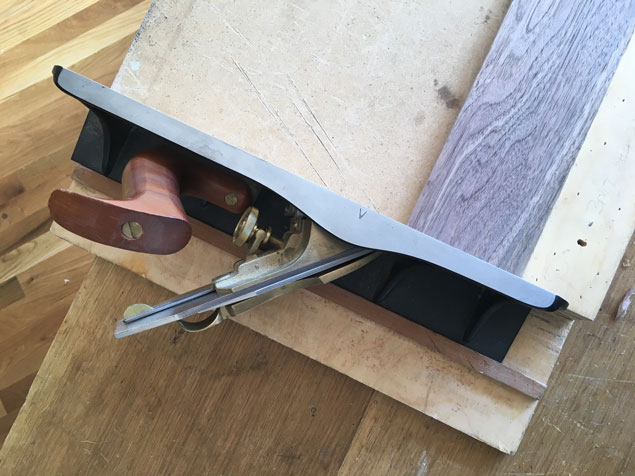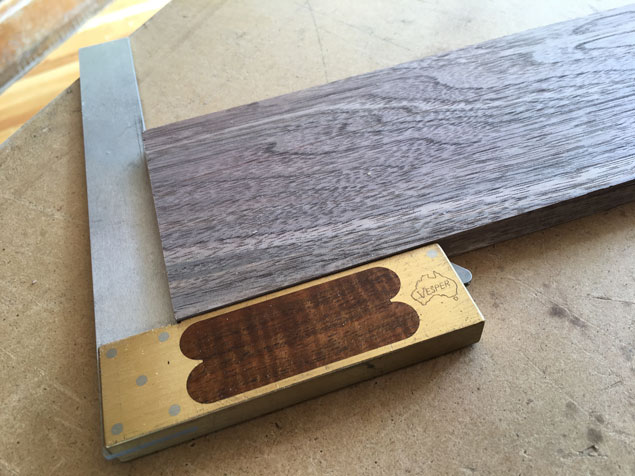We may receive a commission when you use our affiliate links. However, this does not impact our recommendations.
When people injure themselves in the shop, their first reaction is to grab the wound and refuse to look. Sadly, this is the same attitude many woodworkers take with the squareness of their components: They refuse to look and hope things will work out.
While there are lots of areas of woodworking where squareness doesn’t matter (stick chairs, for one), if you are going to build rectilinear boxes and hope to fit rectilinear boxes and doors inside your boxes, you have to be willing to probe every component with a try square and deal with the results.
Today I’m building a complex and mechanical table base using lots of machine operations. But before I set up my mortiser to cut the 60-odd mortises, I checked every wooden component to ensure their ends and edges were square.
I didn’t always do this. When I began woodworking in the early ‘90s, I trusted my machines and jigs to keep things square. If the machine could cut a test piece dead square, that was good enough. If you’ve been woodworking for a while, you know this is folly.
Workpieces can slip slightly during the cut (yes, even with a stop block). A bit of dust trapped between your work and your machine will throw things off in crazy ways. In other words, it’s not square unless the square says it is square.
Which brings me to my squares. While I have a combination square that I use for a lot of tasks, I don’t trust it enough to pass judgment on components and joints. For that I have a fixed-blade try square (mine is from Chris Vesper in Australia) that has been infallible and is treated like an honored guest (i.e. don’t drop your guests on the floor).
After I check each part, I’ll correct it if necessary. I prefer to use a shooting board, though any sharp plane can do the trick. After I correct a part I then compare it other parts that are supposed to be the same length to ensure I’m not making things worse.
In the end, all this fussing is worth it when building complex assemblies. Yes, it slows things down, but it also reduces the number of rhombus boxes coming out of your shop.
— Christopher Schwarz
Here are some supplies and tools we find essential in our everyday work around the shop. We may receive a commission from sales referred by our links; however, we have carefully selected these products for their usefulness and quality.











Life has gotten VERY good for me and my squares [and my knives, and my chisels, and. . . .] – I have concrete floors.
Normally, that’s not a good thing for either feet or fine tools. However, I’ve covered much of the working area of my shop floor with 1″ thick, 4′ wide by 6′ long horse mats ($40.00 ea). I did it for the comfort, and it’s proven worth every penny.
A wonderful side effect is, things bounce, when dropped on them, rather than go thud. Pocket, marking and lathe knives do not suffer chips and when dropped, sharpening or grinding stones live, try squares and other close tolerance tools don’t get thrown out of alignment, and power tools tend to suffer far less from a fall.
I am still adding mats, but only for convenience now, since even my large, heavy equipment have wheels and that 1″ makes me work a little harder when re-arranging furniture for a new whatever, and the 4’x6′ table carving machine (flip up/down table) gets rolled out of the way when not in use.
My dad retired as a machinist/millwright. He sold many of his precision tools after retirement, then gave me his tool chest with an assortment of tools that were still useful. Two of the tools that have transitioned to my tool bag are an inexpensive caliper (no dial) and a solid brass piece of angle. It is dead square on it’s outside corner and square between the arm on the inside (but there is a small curvature there that slightly interferes when trying an outside corner). It is thick enough (about a half inch) so there is no fear of it flexing, and one arm is exactly two inches long. It’s easy enough to carry around and is an accurate check for square that I have no fear of dropping (which happens when I accidentally knock if off the surface on which I’m working). I know my dad “made” this tool because of the saw marks on it. But it is handy.
I’m a huge advocate of buying the highly specialized version of the best tool you can afford for a given task, even if it means having a much smaller tool chest. A good tool tends to exceed its apparent limitations with ease, so you’re not limiting your options as much as you think.
That said, a 24″ and smaller quality combination square is probably the best square for furniture making. Fixed squares that are designed for squareness, not appearance, require a level of care that simply doesn’t exist in a wood shop environment. Without that care you simply aren’t getting the square you paid for. No exceptions. Most people can’t even dispute the issue because they don’t have the tools necessary to do so.
I estimate about .05% of professional cabinetmakers who do bespoke work properly care for their fixed squares.
A hardened combination square head and blade kept clean in its case will deliver a significantly lower greatest deviation over its lifespan than a fixed square that isn’t properly cared for. Ask your local metrologist if the proclamations of some random Internet person isn’t convincing enough (I would if the situation were reversed).
I’ll grant you, a Starrett combination square isn’t nearly as fulfilling to work with as a proper cabinetmakers try square. I’ve got an entire chest of the super snazzy old Bridge City Toolworks tools that I sincerely hoped would displace my machinists tools, and some did, but not the try squares. They simply can’t perform like a machinists combination square. Plus you can’t measure with a try square 🙂
My 4″ Starrett combination square is probably my favorite layout tool. But a 6″ or 12″ will probably suit most people. After 24″ the design starts to collapse on itself, but still, that’s a big square. PLUS, if there’s a tool accident you can replace the blade on a combination square. If you drop your fixed square it needs to go back to the factory for inspection. If you don’t agree that should also prove that the combination square should be your choice. Because if the damage caused by the fall (it will have damage) isn’t enough for you to notice, then why did you buy it?
If I had $200 to spend on a tool that will last a lifetime and had to choose a fixed square or a combination square the combination square would be my pick every time.
I realize you are all woodworkers, but you might consider compromising your joy in those special hand-crafted lovelies for a machinist square. Starrett may lack any wood grain, but it has a beauty of its own.
As a Hollywood set builder used to say, “Square is an enigma.” But then again, he was used to tossing small scraps of lumber at his spinning table-saw with the blade fully exposed then dodge the consequences. He usually worked alone and was easily bored. Claimed it was better than taking up with the bottle again. Said he gave that up for a ball and chain. Thus the need to keep in trim for dodging flying objects.
In response to AAAndrew’s shooting board comments, I am surprised how often I have to reset my shooting board to square, so I recommend he make his next shooting board with a function for tweaking the fence squareness. Chris once suggested using a plastic drafting triangle’s 90 degree legs to check the setting, and I agree.
I am also fortunate enough to have a square from Chris Vesper. Not only is it easy on the eyes, but I really appreciate its accuracy and general ergonomics. (Not to mention the handy tab on its base.) Thanks for the reminder, Chris!
Was just in this situation and checking with my square helped me realize that my old shooting board was no longer perfectly in square. Looks like it’s time to make a new one. It was a good lesson to not just assume that even your tools are square. When precision counts, and I’m far, far from a micrometer woodworker but it sometimes matters a great deal, then it’s worthwhile to trust but verify.
Any advice for larger panels? Let’s say in the 24X36 realm.
I’ve quickly learned (the hard way) how essential this step is. And also how much practice and work it takes to get it right. Glad Mr. Wearing can walk me through the steps over and over again.
Shouldn’t that be “rhomboid”?
Yep, that’s jumped up and bitten me on the seat meat once or twice.
My honored guest was made by Dave Jeske, but it is always on my bench these days as the arbiter of truth when I think I’m ready to move on to the next step. Working slower is almost always faster, right?